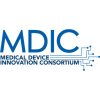In the process of working with OEMs to bring a new medical device to life, we usually observe five main stages. The following column is an overview of the process, along with some tips and ideas to think about during the process.
The first and one of the most important steps in the process is to put together a full-service team of experts. A strong team is built with people of unique skill sets; their varied expertise ranging from quality to regulatory, clinical, laboratory and manufacturing would become a solid foundation on which your product is built.
After your expert team is assembled, it’s time to figure out your device’s needs and establish product requirements. This is where the details come to light and get straightened out. At this stage, the intended application and material requirements are revisited (e.g., the device’s intended duration of use, the materials from which the device might be made, what type of substrate it is intended to stick to, etc.). To understand material requirements, different adhesive and backing options, among others, need to be discussed. If you need to go outside your company, a confidential disclosure agreement and/or a quality agreement with a partner or supplier may be needed to ensure expectations are understood and to protect the parties.
Once the product requirements are established, it is time for your device to take shape and come to life through the prototyping stage. Not all components are meant for all applications—it is also important to remember that there are some incompatible combinations. Different combinations of materials and adhesives must be extensively tested to determine the best option for your device. The prototyping phase can take a few days to a few months, depending on the complexity of the device and experimental results.
Before your device is ready to be launched, it will have to go through a variety of tests to ensure safety, functionality and reliability. While not a comprehensive list, these are the main steps your device may go through in the commercialization process: Product stability testing, design verification/validation, process validation, safety reviews and regulatory clearance.
Your product is on the market and available for purchase—congratulations! Once sales
start flowing, product issues could be a serious threat to your company. It is critical that your
partner checks in about how your device is performing. If an issue arises, you need to feel confident that it will be resolved quickly—responsiveness and dependability are crucial for your product support.
The process of bringing a medical device to market cannot only be a challenging journey, but an exciting one. Expanding your team with external experts to help you through the obstacles can help alleviate the pressure.







